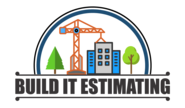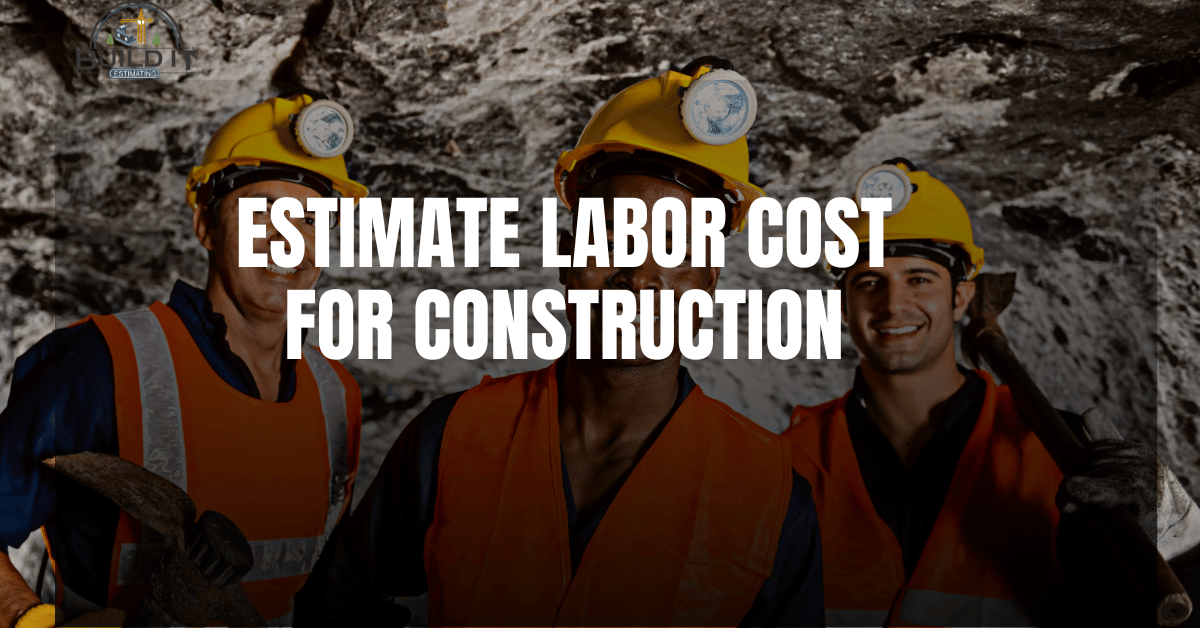Estimating labor cost for construction is a crucial step in project planning and budgeting. Accurate labor cost estimation ensures that projects are completed on time and within budget, avoiding financial pitfalls and delays. This comprehensive guide will walk you through the process, providing detailed insights into the factors influencing labor costs, methods of calculation, and best practices to ensure precision in your estimates.
Understanding Construction Labor Costs
Estimating labor costs in construction involves understanding various direct and indirect expenses associated with hiring, managing, and compensating the workforce. Labor costs can significantly impact the overall project budget, making it essential to consider all elements meticulously.
Factors Influencing Labor Costs
Several factors can influence labor costs in construction, including:
Geographical Location
The cost of labor varies significantly based on the geographical location of the project. Urban areas with a high cost of living typically have higher labor costs compared to rural areas. Additionally, regions with a scarcity of skilled labor might demand higher wages.
Project Size and Complexity
Larger and more complex projects usually require more labor hours and specialized skills, which can increase labor costs. Intricate architectural designs, high-quality finishes, and unique project requirements also contribute to higher labor costs.
Labor Availability
The availability of skilled labor in the market affects labor costs. In areas with a shortage of qualified workers, wages tend to be higher. Conversely, regions with an abundant labor supply might experience lower labor costs.
Skill Levels Required
Projects requiring highly skilled labor, such as electricians, plumbers, or specialized craftsmen, tend to have higher labor costs due to the expertise and experience needed.
Project Duration
Longer projects may have higher labor costs due to extended employment periods and the potential need for additional resources to maintain workforce productivity and morale over time.
Economic Conditions
Economic factors such as inflation, unemployment rates, and overall economic health can influence labor costs. During economic downturns, labor costs might be lower due to increased availability of workers, while during economic booms, labor costs may rise due to higher demand.
Regulatory Requirements
Compliance with local labor laws, safety regulations, and union requirements can affect labor costs. Ensuring adherence to these regulations may involve additional training, certifications, or safety measures, contributing to the overall cost.
Types of Labor Costs
Labor costs in construction are generally categorized into direct and indirect costs.
Direct Labor Costs
Direct labor costs include wages, salaries, and benefits directly paid to workers involved in the construction project. This encompasses:
Hourly Wages
Hourly wages are paid to workers based on the number of hours worked. The rate varies depending on the job role, skill level, and experience.
Salaries
Salaries are fixed regular payments made to employees, typically on a monthly or annual basis. This is common for supervisory or managerial positions.
Overtime Pay
It is additional compensation provided for hours worked beyond the standard workweek. Overtime rates are usually higher than regular hourly wages.
Fringe Benefits
Fringe benefits include health insurance, retirement plans, paid leave, and other employee perks. These benefits are part of the total compensation package and contribute to the overall labor costs.
Indirect Labor Costs
Indirect labor costs are not directly tied to specific work hours but are necessary for employing workers. These include:
Payroll Taxes
Payroll taxes are mandatory contributions made by employers to government programs such as Social Security and Medicare. These taxes are based on the employee’s earnings.
Workers’ Compensation Insurance
Workers’ compensation insurance covers medical expenses and lost wages for employees injured on the job. The cost of this insurance varies based on the nature of the work and the risk involved.
Unemployment Insurance
Unemployment insurance provides temporary financial assistance to workers who have lost their jobs. Employers are required to contribute to state and federal unemployment insurance programs.
Employee Benefits
Employee benefits encompass various non-wage compensations such as health insurance, retirement plans, and other perks that contribute to employee well-being and job satisfaction.
Steps to Estimate Labor Costs
Accurately estimating labor costs involves a systematic approach to account for all variables. Here are the steps to follow:
Define the Scope of Work
Clearly outline the tasks and responsibilities required for the project. This includes identifying all phases of construction and the specific work involved in each phase.
Identify Required Labor Skillsets
Determine the types of skills needed for the project. This could include general laborers, specialized tradespeople, supervisors, and administrative staff.
Determine Labor Hours Needed
Estimate the number of labor hours required for each task. This involves assessing the time needed to complete each phase of the project based on historical data and industry standards.
Consider Productivity Rates
Account for productivity rates, which can vary based on factors such as weather conditions, site accessibility, and worker efficiency. Adjust labor hour estimates accordingly.
Factor in Overtime and Breaks
Include potential overtime hours and mandated breaks in your calculations. This ensures that your estimate reflects realistic working conditions and compensates for additional costs.
Calculate Labor Costs per Hour
Determine the hourly wage rates for each labor category. Multiply these rates by the estimated labor hours to calculate the labor costs for each task.
Sum Up Total Labor Costs
Add the labor costs for all tasks to arrive at the total estimated labor cost for the project. Ensure that both direct and indirect costs are included in this total.
Using Labor Cost Estimation Tools
Several tools and methods can aid in estimating labor costs:
Software Solutions
Construction management software often includes labor cost estimation features. These tools can automate calculations, provide historical data, and streamline the estimation process.
Online Calculators
Various online calculators are available to assist in estimating labor costs. These calculators typically require input of project details and labor rates to generate cost estimates.
Manual Calculation Methods
For those who prefer a hands-on approach, manual calculation methods involve using spreadsheets or calculation sheets to estimate labor costs. This method requires attention to detail and thorough documentation.
Common Pitfalls in Estimating Labor Costs
Avoiding common pitfalls can improve the accuracy of labor cost estimates:
Underestimating Labor Hours
Failing to accurately estimate the number of labor hours needed can result in budget overruns. Ensure that all tasks are thoroughly analyzed and accounted for.
Ignoring Indirect Costs
Neglecting indirect labor costs can lead to significant financial shortfalls. Always include costs such as payroll taxes, insurance, and benefits in your estimates.
Overlooking Productivity Variations
Productivity rates can vary based on numerous factors. Ignoring these variations can lead to inaccurate labor hour estimates. Regularly review and adjust productivity rates based on project conditions.
Failing to Update Estimates Regularly
Labor costs can change over time due to wage increases, economic conditions, and other factors. Regularly update your estimates to reflect current rates and conditions.
Best Practices for Accurate Estimations
Implementing best practices can enhance the accuracy of your labor cost estimates:
Regularly Update Wage Rates
Stay informed about current wage rates for various labor categories. Regular updates ensure that your estimates are aligned with market conditions.
Track Actual Labor Costs
Monitor and track actual labor costs throughout the project. This provides valuable data for refining future estimates and identifying areas for improvement.
Use Historical Data
Leverage historical data from previous projects to inform your estimates. Analyzing past labor costs can provide insights into potential cost drivers and help improve accuracy.
Engage Experienced Estimators
Involve experienced estimators in the labor cost estimation process. Their expertise and knowledge can significantly enhance the precision of your estimates.
Case Studies of Labor Cost Estimation
Examining real-world case studies can provide valuable lessons and insights:
Successful Projects
Analyze projects where labor cost estimation was accurate and effective. Identify the factors and practices that contributed to successful outcomes.
Lessons from Mistakes
Learn from projects where labor cost estimation fell short. Understanding the mistakes made and their impacts can help avoid similar pitfalls in future projects.
Frequently Asked Questions
What are the primary components of labor costs in construction?
Labor costs include direct costs such as wages, salaries, and fringe benefits, as well as indirect costs like payroll taxes, workers’ compensation insurance, and employee benefits.
How can I ensure accurate labor cost estimates for my construction project?
To ensure accuracy, define the scope of work clearly, identify required skillsets, estimate labor hours needed, consider productivity rates, and factor in overtime and breaks. Regularly update your estimates and track actual costs.
What tools can help with labor cost estimation?
Construction management software, online calculators, and manual calculation methods can assist with labor cost estimation. Each tool has its advantages and can be chosen based on project needs and preferences.
Why is it important to include indirect labor costs in estimates?
Indirect labor costs, such as payroll taxes and insurance, are necessary expenses for employing workers. Excluding these costs can result in significant financial shortfalls and impact project profitability.
What are some common mistakes to avoid in labor cost estimation?
Common mistakes include underestimating labor hours, ignoring indirect costs, overlooking productivity variations, and failing to update estimates regularly. Avoiding these pitfalls can improve estimate accuracy.
How do economic conditions affect labor costs?
Economic conditions such as inflation, unemployment rates, and overall economic health can influence labor costs. During economic downturns, labor costs might be lower due to increased availability of workers, while during economic booms, labor costs may rise due to higher demand.
Conclusion
Estimating labor cost for construction is a complex but essential task that requires careful consideration of various factors and costs. By understanding the components of labor costs, using appropriate tools, and implementing best practices, you can ensure accurate and reliable estimates for your construction projects. Regular updates, tracking actual costs, and learning from past experiences will further enhance your ability to estimate labor costs effectively, ultimately contributing to the success and profitability of your construction endeavors.

